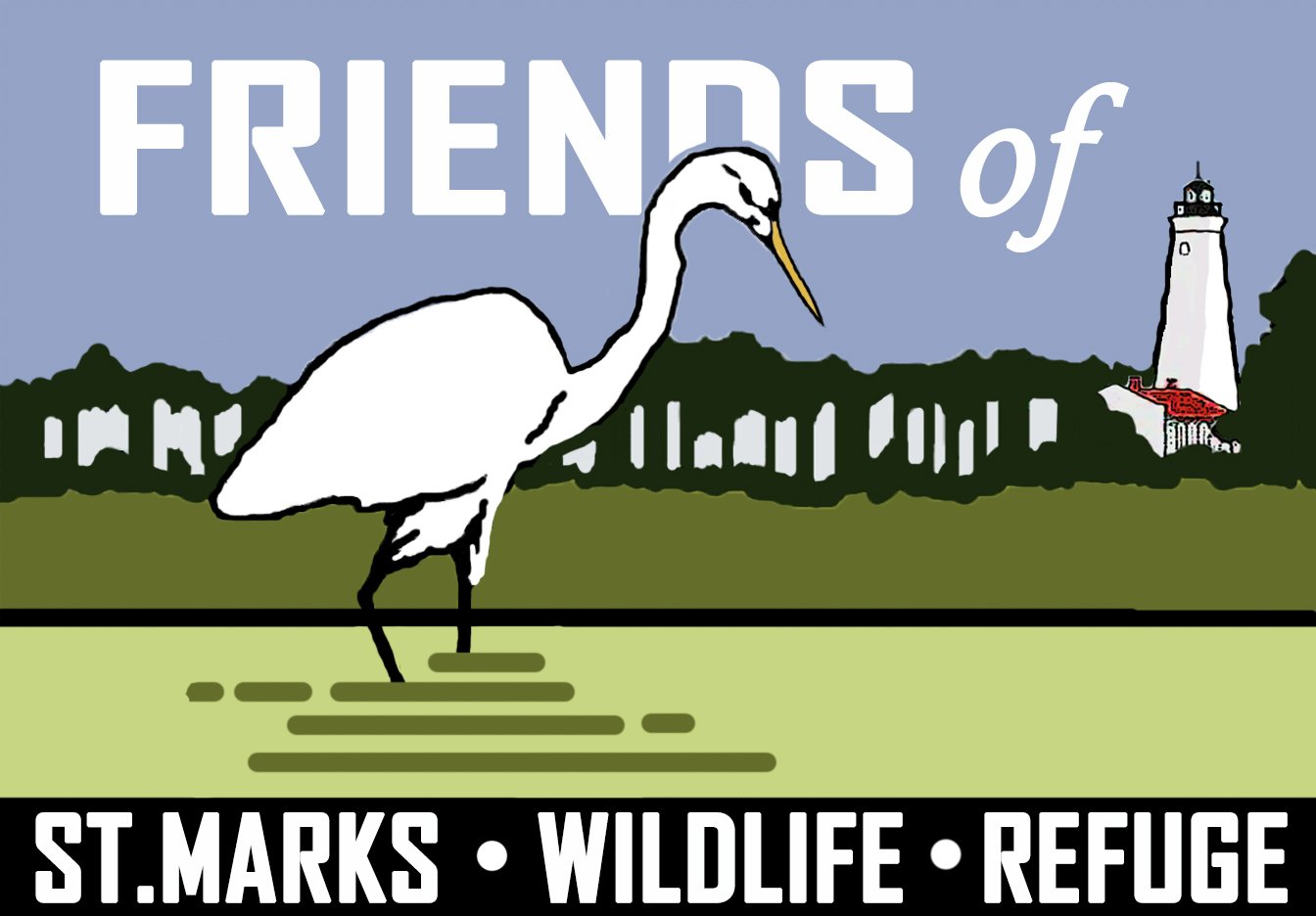I rolled through the gates of St. Marks NWR on Sunday morning at 6:00 am. A squall line had passed through in the middle of the night and another was expected in late morning. I figured that I had time to fit in a shorebird survey. I was carrying a full rain suit, just in case.
When I got out of my car to unlock the Tram Road gate, a fat crescent moon was riding high overhead. By the time I was a half mile down the road, the moon had been snuffed out by scudding clouds. I had all the windows open and was letting the car roll forward at idle speed – about five mph—with only the parking lights on. As I neared my turn for Road 106, which parallels Lighthouse Road, I heard the mournful warble of an eastern Screech Owl coming from somewhere out in the flatwoods.
It took me an hour to get out to my listening spot on the North levee of Stony Bayou II. I had had no other owls and only the squawking of a Great Blue Heron and a fast-moving deer running across the road. It was nearing first light. Lots of birds were talking; Blue-winged Teal, Wilson’s Snipe, Marsh Wren and a Cardinal. Midwinter mosquitos were out. Sora Rails began calling and the sky above me was showing streaks of blue through breaks in the clouds. A lone Wood Duck flew by silhouetted against the lighter sky..
As I drove out to the end of Stony Bayou II to start my survey, more Wood Ducks flew by. I had a total of seventeen, the most that I’ve had this winter. I should be seeing between seventy-five and a hundred birds.
I set up my scope on the East levee and began counting shorebirds; Dunlin, Willet, Greater Yellowlegs, Black-bellied Plover, Snipe and Killdeer. I entered into my shorebird survey rhythm: drive two hundred yards, stop, scope and count, get back in car, repeat. I started picking up birds on the levee edge; Sedge Wren, White-throated, Swamp & Song Sparrow. I noticed an American Kestrel perched on the branch of the big Live Oak on the outer levee. By the time I had finished surveying Stony Bayou II, I had seven species and 181 individual birds. By the time I was through with the survey, I had seventeen species and 2,401 individual birds.
This was a light survey for January at the refuge. I would expect closer to 3,000 birds. Stony Bayou I used to be kept low in winter and attracted the majority of shorebirds seeking shelter at high tide. It is now kept low in Summer in order to provide nesting habitat for Wilson’s Plovers and Least Terns. These are species that need management help.
Winter shorebirds are now more dispersed and more difficult to survey. Most of the shorebirds that I found were on Mounds Pool III and Tower Pond. My numbers are at 80% of where they should be. I assume that the missing birds are happily feeding on isolated mud flats.
The American Flamingo is still lurking about. Today it was absent from East River Pool until it flew in in late morning. Birders from around the country are visiting the refuge to see it. I’ve met birders from a dozen states who are trying to add it to their list. My best advice is to check East River Pool and talk to anybody carrying binoculars to find out if they now where it is today. It has been erratic, but repeatedly returns to East River Pool and often spends the night there.
The late-morning squall lines were wimpy. The mid-winter mosquitos were fierce on the outer levees. The few upcoming below-freezing nights should dispose of them. That’s January at the refuge; mosquitos one day and frost the next.
Don Morrow, Tallahassee, FL

